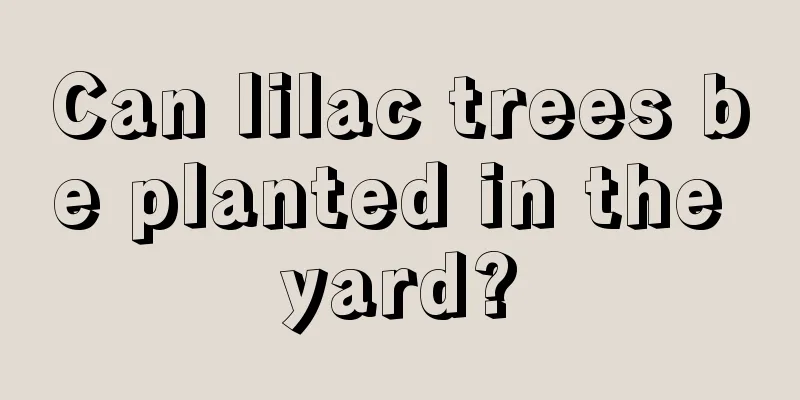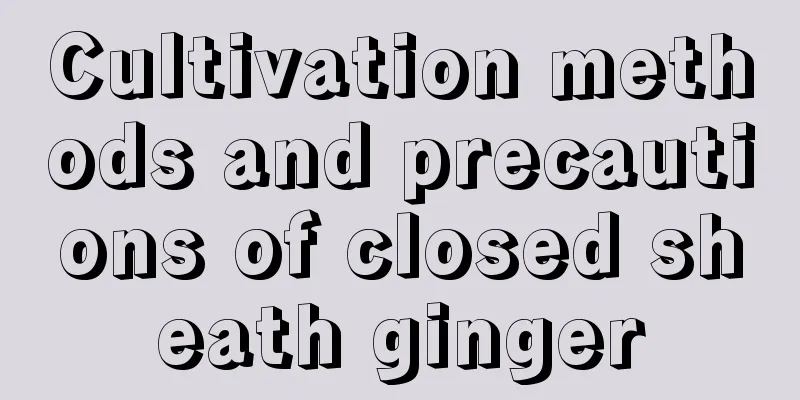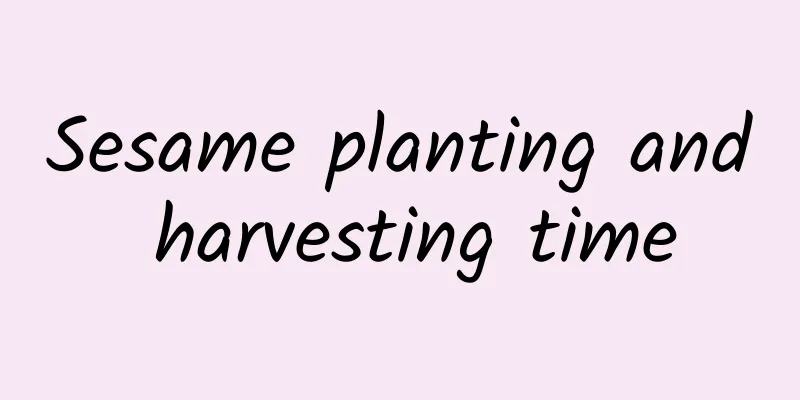Houttuynia cordata planting time and method

|
Houttuynia cordata , also known as Houttuynia cordata, Houttuynia cordata, and Pig Nose Arch, is a perennial herb of the genus Houttuynia of the family Saururaceae. The tender stems and leaves of Houttuynia cordata are edible, with a crispy texture and a special fishy smell. They can be eaten cold, stir-fried or cooked into soup, and have a unique flavor. Below, the editor will introduce the planting time and method of Houttuynia cordata, let’s take a look. 1. Planting time of Houttuynia cordata 1. Spring planting Since the temperature in northern regions rises slowly in spring, it is recommended to plant it from April to June to ensure that Houttuynia cordata can grow under suitable temperature and humidity conditions. The spring climate in the southern region is warm, and March to May is a good time to plant Houttuynia cordata. 2. Autumn planting In tropical areas or temperate regions, autumn from September to October is a good time to plant Houttuynia cordata when the climate is warm but not too hot and the soil moisture is moderate. 2. Houttuynia cordata planting method 1. Land preparation and fertilization Choose fertile, loose, well-drained sandy loam or soil rich in organic matter. Apply 3000-4000 kg of decomposed organic fertilizer per mu, along with an appropriate amount of compound fertilizer . 2. Breeding method The main methods of propagation of Houttuynia cordata are seed propagation, division propagation and rhizome propagation. Propagation by division is carried out in spring or autumn. The previously planted Houttuynia cordata is dug out, divided and replanted. 3. Watering Houttuynia cordata needs plenty of water, but avoid overwatering which can cause root rot. During the planting process, keep the soil moist, especially in the seedling stage, water frequently. In the later stages of growth, the amount of watering can be reduced appropriately to promote root development. 4. Weeding During the growing period, weeds in the field should be removed in time to avoid competing with Houttuynia cordata for nutrients. Weeding can be done by hand pulling or using pesticides. 5. Fertilization Houttuynia cordata has a greater demand for fertilizer , especially in the middle and late stages of growth. When applying fertilizer, pay attention to the balanced supply of nutrients such as nitrogen, phosphorus and potassium. In the early stage, nitrogen fertilizer is mainly used to promote the growth of seedlings. In the middle and late stages, phosphorus and potassium fertilizers should be applied to increase yield and quality. 6. Pest and disease control Houttuynia cordata has fewer diseases and pests, but in order to effectively prevent them, it is still necessary to strengthen cultivation management and improve the plant's disease resistance. For any diseases and pests discovered, biological control, chemical control and other methods should be adopted in a timely manner to prevent and control them. The above is an introduction to the planting time and method of Houttuynia cordata. Houttuynia cordata is generally harvested from spring to autumn. When harvesting, you should choose healthy plants without diseases and insect pests, dig out their roots, and wash them before eating or processing.
|
<<: Onion planting time and method
>>: How and when to plant garlic in spring
Recommend
Cultivation methods and precautions of Hylocereus truncatula
Farming methods Light and temperature The octagon...
“Tiger Piranha” not growing vigorously? Why not try these "3 tricks" to make the leaves green and lush and fill the entire pot!
Loosen the soil in time The Sansevieria hasn'...
Green radish grows fastest in summer. If you grow it like this, it will grow to 1 meter in 20 days!
If you expose the green radish to more sunlight a...
How much does a blueberry seedling cost (how much does a seedling cost)
1. Price The price of blueberry seedlings is actu...
Pictures of fertilizer damage caused by excessive fertilization of peppers (how to prevent and control fertilizer damage in the seedling stage of pepper planting)
Peppers are widely used in diet. Many growers spr...
Breeding techniques for North American alligator turtles
The North American alligator snapping turtle is a...
The difference between cinnamon and cassia, the role of cinnamon
1. Difference There is actually no difference bet...
How to deal with cattail peanut aphids
Symptoms of calceolus aphid disease The aphid dis...
Can hyacinths be exposed to the sun? Will they be killed by the sun?
1. Can it be exposed to the sun? 1. Soil cultivat...
Is it good to use rice water to water flowers? The correct way to water flowers
1. Is it good to water the flowers? Rice water co...
Cultivation methods and precautions of flame orchid
Flame orchid is relatively easy to grow. Because ...
How to plant potted carnation seeds (what season to plant, is it easy to germinate)
1. Planting Season Carnations should be sown in s...
How to grow spinach quickly
1. Prepare the solution Spinach is generally prop...
Lily Bamboo | Aquatic plants suitable for living rooms
Other Names Bamboo banana Habits It likes high te...
How to prune agave
1. How to trim Agave itself is a plant that grows...









